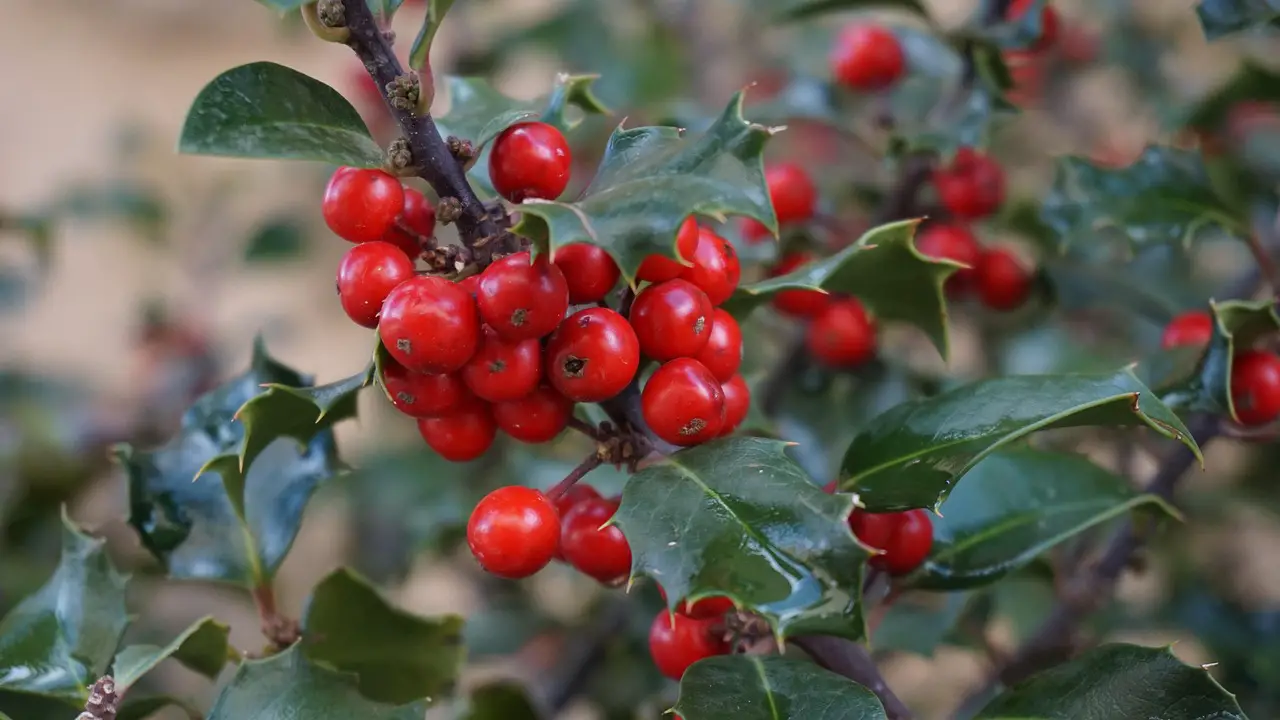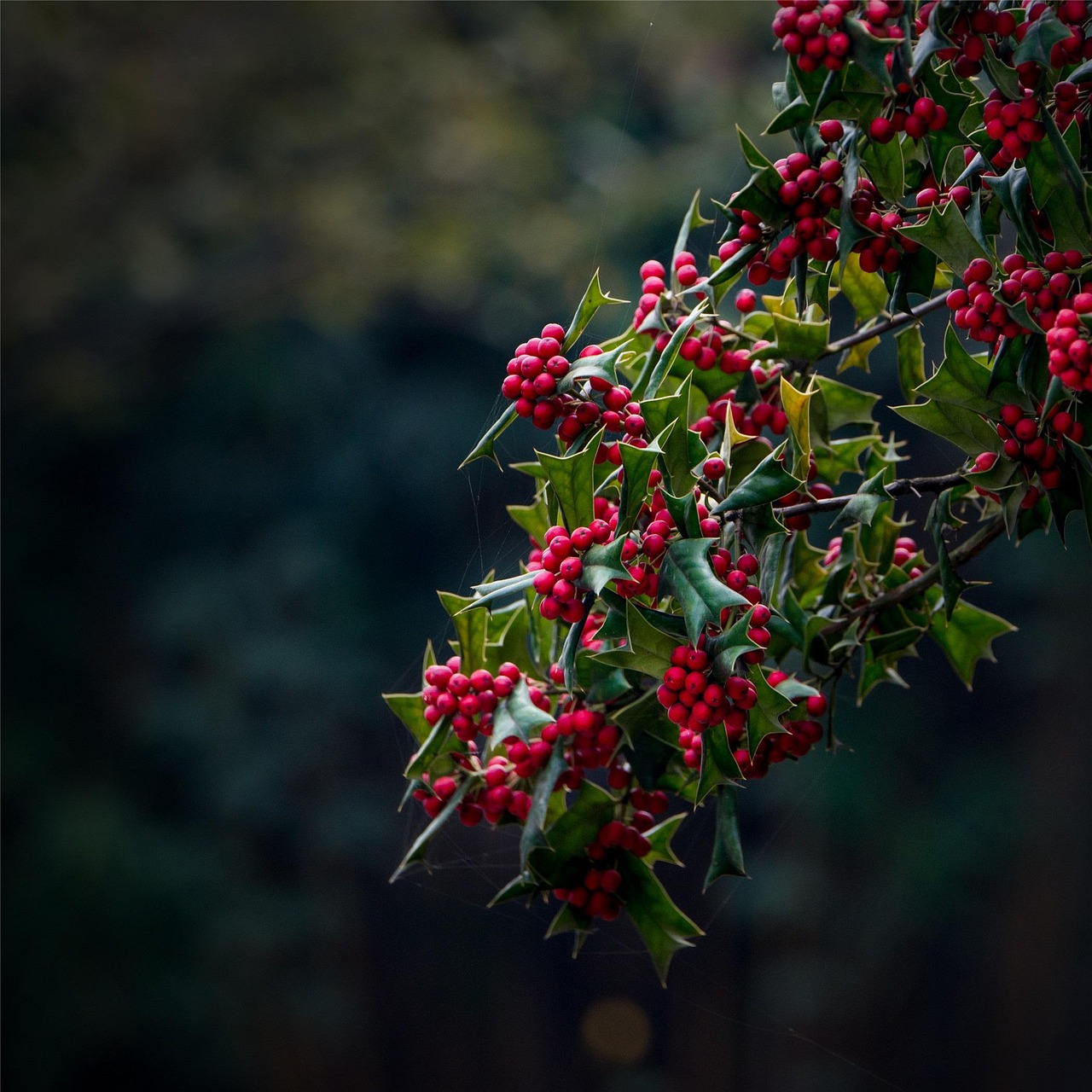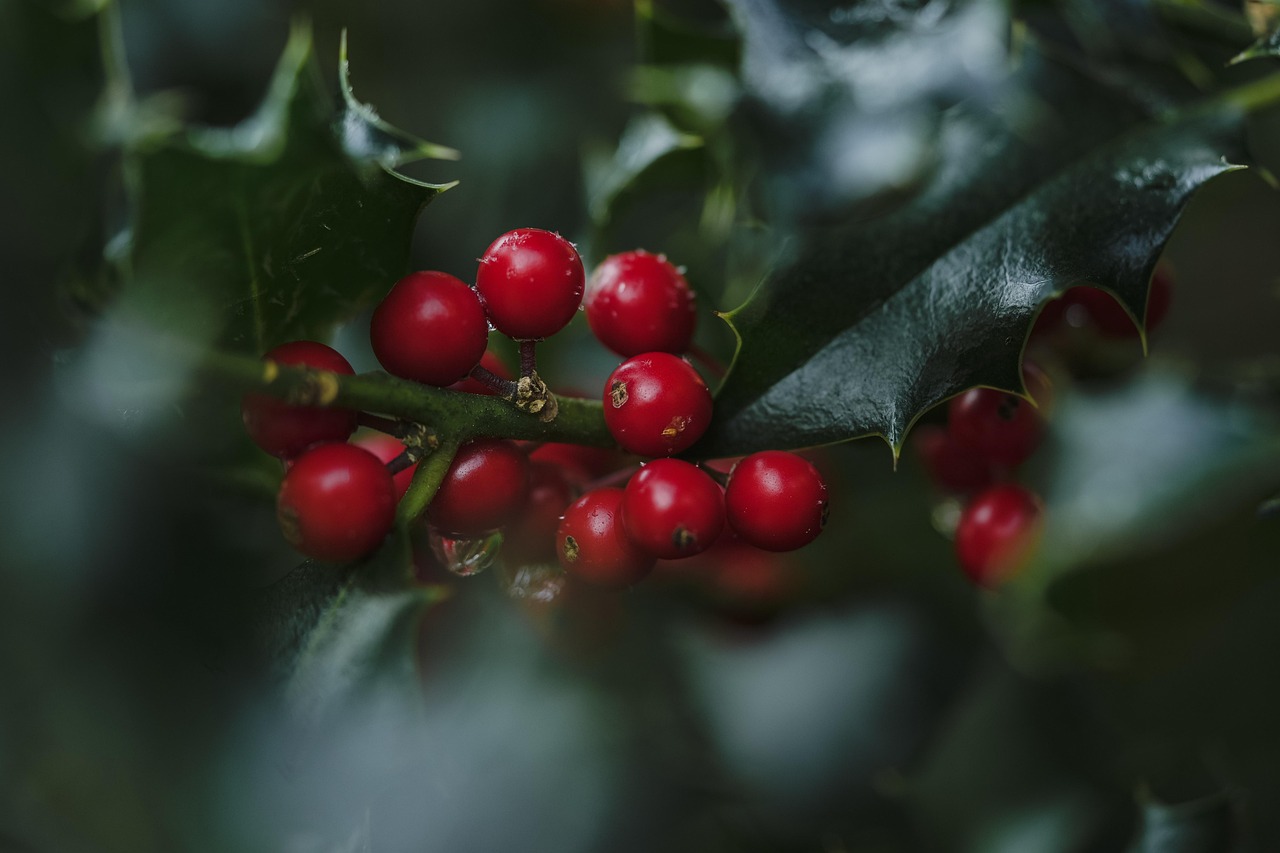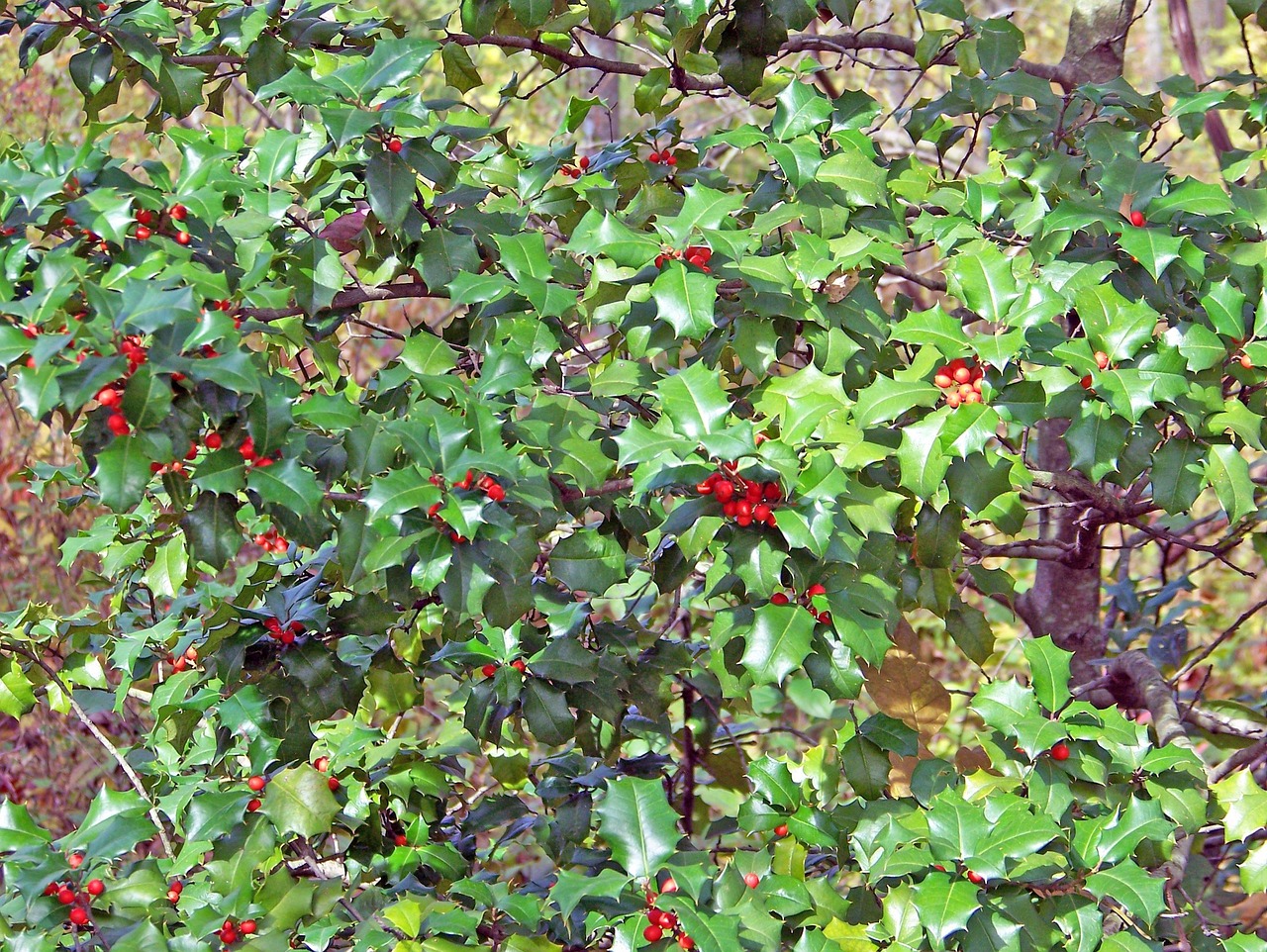The growth rate of holly trees varies by species and environmental conditions, but generally, they can grow between 12 to 24 inches per year. This makes them an excellent choice for creating year-round green boundaries.
Understanding Holly Trees
Holly trees are popular for landscaping and garden design due to their lush foliage and vibrant berries. They belong to the Ilex genus, which includes a variety of species that thrive in different climates. These trees are well-known for their ability to maintain greenery throughout the year, making them ideal for privacy screens and windbreaks.

One of the most appealing attributes of holly trees is their adaptability. They can grow in a range of soil types and tolerate varying light conditions, from full sun to partial shade. This resilience makes them a favorite among gardeners looking to create evergreen barriers. Additionally, holly trees are often chosen for their aesthetic appeal, with glossy leaves and bright red berries that add color and interest to the landscape.
Factors Influencing Growth Rate
The growth rate of holly trees is influenced by several factors, including species, soil quality, climate, and care practices. Understanding these elements can help gardeners optimize the growth of their holly trees.
- Species: Different species of holly have varying growth rates. For example, American holly can grow faster than Japanese holly.
- Soil Quality: Well-draining soil rich in organic matter promotes healthy growth. Poor soil can stunt development.
- Climate: Holly trees thrive in USDA hardiness zones 5 to 9. Regions with extreme temperatures may affect their growth.
- Watering: Consistent watering during dry spells encourages faster growth. However, overwatering can lead to root rot.
- Fertilization: Regular fertilization during the growing season can enhance growth rates significantly.
Growth Rates by Species
Different species of holly trees exhibit distinct growth rates. Below is a table summarizing the average growth rates for some popular holly varieties:

| Holly Species | Average Growth Rate (inches/year) | Height at Maturity (feet) |
|---|---|---|
| American Holly (Ilex opaca) | 12 – 24 | 15 – 30 |
| Japanese Holly (Ilex crenata) | 6 – 12 | 3 – 10 |
| English Holly (Ilex aquifolium) | 12 – 18 | 15 – 50 |
| Chinese Holly (Ilex cornuta) | 12 – 24 | 8 – 15 |
As shown in the table, American and Chinese hollies have the potential for more rapid growth compared to Japanese and English hollies. This information is vital for gardeners who are looking to establish quick-growing green boundaries.
Best Practices for Encouraging Growth
To ensure optimal growth rates for holly trees, it is essential to follow best practices in planting and maintenance. Here are some tips:
- Select the Right Species: Choose a species suited for your climate and landscape needs.
- Planting Location: Ensure adequate sunlight while providing some shade during the hottest part of the day.
- Soil Preparation: Amend the soil with compost or peat moss to enhance drainage and nutrient content.
- Regular Pruning: Prune holly trees annually to encourage bushiness and remove dead or damaged branches.
- Pest Management: Monitor for common pests such as scale insects and treat them promptly to prevent damage.
By following these guidelines, gardeners can promote healthy growth rates and establish beautiful, year-round green boundaries with holly trees.

Common Types of Holly Trees for Landscaping
Choosing the right type of holly tree is crucial for achieving the desired growth rate and aesthetic appeal in your landscape. Various species offer different characteristics, making some more suitable for specific climates and designs than others. Below is a discussion of common holly types used for year-round green boundaries.
American Holly (Ilex opaca)
The American holly is a classic choice for many landscapes. It is known for its tall, upright growth and distinctive spiny leaves. This species can reach heights of 15 to 30 feet, making it ideal for creating taller boundaries. Its growth rate typically ranges from 12 to 24 inches per year.
American holly is also appreciated for its bright red berries, which provide winter interest and attract birds. However, it requires well-drained soil and prefers full sun to partial shade.

Japanese Holly (Ilex crenata)
Japanese holly is a smaller-growing species, usually reaching heights of 3 to 10 feet. It features small, glossy leaves that resemble boxwood, making it an excellent option for formal hedges or lower boundaries. Its growth rate is slower compared to other species, averaging 6 to 12 inches per year.
This species is particularly suitable for urban environments due to its tolerance for pruning and shaping. It thrives in well-drained soils and can tolerate partial shade.
English Holly (Ilex aquifolium)
English holly is a traditional favorite, often associated with holiday decorations due to its bright red berries and spiky leaves. This species can grow between 15 and 50 feet tall, depending on growing conditions. Its growth rate averages around 12 to 18 inches per year.
English holly prefers moist, well-drained soil and full sunlight. It is widely used for ornamental purposes and can be shaped into various forms through careful pruning.
Chinese Holly (Ilex cornuta)
Chinese holly is another popular choice for landscaping. It grows to a height of about 8 to 15 feet and has a growth rate similar to American holly, typically ranging from 12 to 24 inches per year. The leaves are spiny and dark green, providing a striking contrast against its bright red berries.
This species is highly adaptable and can thrive in a variety of soil types. It prefers full sun but can tolerate some shade as well.
Environmental Conditions Affecting Growth
While selecting the right species is essential, understanding environmental conditions also plays a vital role in the growth rate of holly trees. Several key factors impact their development:
- Temperature: Hollies generally prefer moderate temperatures. Extreme cold or heat can hinder growth.
- Humidity: High humidity levels can benefit hollies, especially during the growing season. Adequate moisture helps them flourish.
- Soil pH: Most holly species thrive in slightly acidic to neutral soil (pH 6.0 – 7.0). Soil testing can help determine if amendments are needed.
- Sunlight: Adequate sunlight is crucial for photosynthesis, impacting overall health and growth rates. Full sun is preferable for most species.
Watering Needs
Proper watering is vital for establishing healthy holly trees. Newly planted hollies require consistent moisture to establish their root systems. Here are some considerations regarding their watering needs:
- Initial Watering: Water newly planted hollies deeply once or twice a week during the first growing season.
- Established Trees: Once established, hollies are relatively drought-tolerant but should still receive water during extended dry spells.
- Signs of Stress: Yellowing leaves or wilting may indicate that the tree requires more water.
- Mulching: Applying mulch around the base of the tree helps retain moisture and regulates soil temperature.
Pest and Disease Management
Like any other plant, holly trees are susceptible to certain pests and diseases that can affect their growth rates. Familiarizing yourself with these potential issues can help you take proactive steps in managing them.
- Scale Insects: These pests can weaken trees by sucking sap. Regular inspections and horticultural oils can help control them.
- Aphids: These small insects can cause leaf curling and stunted growth. Beneficial insects such as ladybugs can help manage aphid populations.
- Canker Diseases: These fungal infections can lead to dieback in branches. Ensuring proper air circulation and avoiding overhead watering can minimize risk.
By being vigilant about pest and disease management, gardeners can ensure that their holly trees remain healthy and continue to thrive, contributing to beautiful year-round green boundaries.
Seasonal Care for Holly Trees
To ensure the health and growth of holly trees, it is essential to provide seasonal care. Different seasons require different approaches to maintain optimal conditions for growth. Here’s a breakdown of what to do throughout the year.
Spring Care
Spring is a critical time for holly trees as they begin their active growth phase. During this season, proper care can set the tone for healthy development throughout the year.
- Fertilization: Apply a balanced, slow-release fertilizer designed for trees in early spring. This provides essential nutrients needed for vigorous growth.
- Watering: Ensure that the soil remains moist but not waterlogged. Regular watering is crucial as new leaves and buds start to develop.
- Pest Inspection: Check for early signs of pests such as aphids and scale insects. Prompt action can prevent infestations from becoming severe.
Summer Care
During the summer months, holly trees are in full growth mode. Care during this time focuses on maintaining hydration and managing pests.
- Watering Schedule: Increase watering frequency during hot spells. Deep watering once a week is often more beneficial than shallow watering more frequently.
- Mulching: Apply a layer of organic mulch around the base of the tree to retain moisture and suppress weeds. This helps keep the root zone cool.
- Pest Control: Continue monitoring for pests. If necessary, use insecticidal soap or other organic treatments to manage populations effectively.
Fall Care
As the growing season winds down, fall care prepares holly trees for winter dormancy. Proper preparation is vital to ensure their survival through colder months.
- Watering: Water trees well before the first frost. This helps them store moisture that will be critical during dry winter months.
- Pruning: Conduct any necessary pruning to remove dead or diseased branches. This helps improve air circulation and reduces disease risk.
- Fertilization: Avoid fertilizing in late fall, as this can encourage new growth that may be damaged by frost.
Winter Care
Winter presents unique challenges for holly trees, especially in regions with harsh climates. Taking appropriate measures can protect trees from cold damage.
- Protection from Cold: In areas with extreme cold, consider wrapping the trunks with burlap or using tree guards to protect against frost damage.
- Icing Prevention: Ensure that snow and ice do not accumulate on branches, as heavy loads can cause breakage. Gently brush off excess snow if necessary.
- Monitor for Stress: Check for signs of stress such as wilting leaves or discoloration, indicating that the tree may need additional care or protection.
The Role of Holly Trees in Ecosystems
Holly trees play an important role in local ecosystems, providing benefits beyond their aesthetic appeal. Understanding these contributions can enhance appreciation for these trees in landscaping.
Wildlife Habitat
Holly trees serve as critical habitats for various wildlife species. Their dense foliage provides shelter and nesting sites for birds and small mammals. Additionally, the berries produced in late fall attract numerous bird species during winter months.
Erosion Control
The root systems of holly trees help stabilize soil, preventing erosion. This is particularly beneficial on slopes and in areas prone to runoff.
Aesthetic and Cultural Significance
Beyond their ecological benefits, holly trees have significant cultural and aesthetic value. They are often associated with holiday traditions and can enhance the beauty of gardens year-round. Their evergreen nature symbolizes resilience and longevity, making them a popular choice in various landscapes.
Choosing the Right Location
The success of holly trees largely depends on their planting location. Selecting an appropriate site can significantly impact growth rates and overall health.
- Sun Exposure: Holly trees thrive in full sun to partial shade. A location that receives at least 6 hours of sunlight per day is ideal.
- Soil Drainage: Ensure that the chosen site has well-draining soil to prevent root rot. Avoid low-lying areas where water tends to accumulate.
- Spacing Considerations: When planting multiple hollies, consider their mature size and provide adequate spacing to allow for airflow and sunlight penetration.
By considering these factors and providing seasonal care, gardeners can optimize the growth rate and health of holly trees, creating beautiful green boundaries that thrive throughout the year.
Maintenance Practices for Long-Term Health
Once planted, holly trees require ongoing maintenance to ensure their long-term health and growth. Regular care can help mitigate potential issues and promote vibrant greenery year-round. Here are some essential maintenance practices:
Regular Inspections
Conducting routine inspections helps identify pest infestations, diseases, or nutrient deficiencies early. Look for:
- Discoloration of leaves
- Unusual growth patterns
- Signs of pests, such as webs or droppings
Addressing these issues promptly can prevent more significant problems down the line.
Soil Testing
Performing a soil test every few years ensures that the soil remains suitable for holly trees. Testing can reveal:
- pH levels
- Nutrient deficiencies
- Organic matter content
This information allows for informed amendments to optimize growth conditions.
Proper Pruning Techniques
Pruning holly trees is essential for maintaining their shape and health. Here are a few guidelines:
- Timing: The best time to prune holly trees is late winter or early spring before new growth starts.
- Tools: Use sharp, clean pruning shears to make precise cuts. This minimizes damage to the tree.
- Technique: Remove dead or damaged branches first. Then, shape the tree while ensuring good air circulation within the canopy.
Companion Planting with Holly Trees
Companion planting can enhance the growth and health of holly trees. Certain plants can provide benefits such as pest deterrence, improved soil quality, or aesthetic appeal. Here are some excellent companion plants:
- Pansies: These flowers attract beneficial insects and provide visual contrast against holly foliage.
- Lavender: Its fragrance repels some pests that may target hollies.
- Ferns: Adding ferns around the base of holly trees can create a lush understory and help retain moisture in the soil.
Avoiding Incompatibles
While selecting companion plants, it’s also essential to avoid those that may compete for nutrients or harbor pests. For instance, heavy feeders such as corn or tomatoes can deplete soil nutrients needed for holly trees.
Conclusion
The growth rate of holly trees plays a significant role in establishing year-round green boundaries that enhance the beauty of any landscape. By understanding the factors that influence growth, such as species selection, environmental conditions, seasonal care, and pest management, gardeners can create thriving holly displays.
Regular maintenance practices like inspections, soil testing, and proper pruning are vital for sustaining the health of these trees. Additionally, companion planting can further enrich the ecosystem around hollies and help maintain their vigor.
With careful planning and dedicated care, holly trees can flourish and provide enduring beauty and functionality in gardens and landscapes for many years to come. Their evergreen nature, striking berries, and adaptability make them an exceptional choice for anyone looking to create a vibrant and sustainable green boundary.
